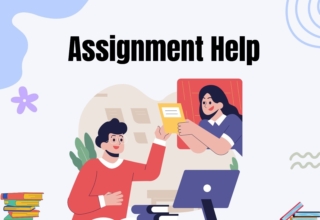
It is the level of education after completing secondary school, sometimes known as post-secondary education. It comprises universities, colleges, and vocational schools. A university diploma, certificate, or degree is typically the culmination of post-secondary education. Post-secondary education is decentralized and autonomous from federal government laws. It is post-secondary education that leads to a university degree. Higher education, also known as post-secondary education, high school, or higher education, is the ultimate step of formal schooling after secondary education.
Post-secondary education includes all levels of education following high school, including colleges, universities, and trade schools. Organizations can range from public or private, for-profit or not-for-profit, and they provide various services. Local community colleges typically provide associate or two-year degrees, while some offer bachelor’s degrees. While universities and colleges are frequently confused, colleges are generally smaller than universities and provide a more limited number of programs. After thorough consideration, students should be admitted to college or university; there is no need to rush into a specific course. A student’s entire life is dependent on this decision. Therefore make it after careful consideration. Ask professionals for advice; they will share their experiences, and students will understand the course in this manner and post-secondary education benefits. Students must take these years seriously and study diligently.
Table of Contents
What is Post-secondary Education?
Post-secondary education refers to the various types of education people can pursue after high school. Post-secondary education serves many different objectives. People must make conscious decisions to ensure that they enroll in the program that will help them reach their specific goals and provide them with post-secondary education benefits that will help them in the future. Many attend college to pursue a two- or four-year degree, whereas others attend trade and vocational schools to acquire a certification or certificate. There are various colleges, each with its own structure and requirements. Some are exceedingly competitive, while others accept the majority of candidates. Anyone who attends a post-secondary institution is considered a post-secondary student.
The federal government has decentralized control over education and does not regulate it. Since we have both public and private institutions, post-secondary education is frequently distinct.
While some institutions are big and small, some have a religious association, some can be rural or urban, and others can be secular. Numerous choices are frequently defined locally depending on your selection. The federal government has decentralized control over education and does not regulate it. Since we have both public and private institutions, post-secondary education is frequently distinct. While some institutions are big and small, some have a religious association, some can be rural or urban, and others can be secular. Numerous choices are frequently defined locally depending on your selection.
What Falls Under Post-secondary Education?
What is post-secondary education entailing? Since its name implies that it comes after secondary school, post-secondary education refers to a level of education that is higher than high school. Any institution that grants diplomas, college degrees and certificates for trades is referred to as a post-secondary school. These degrees can frequently be obtained below or above a bachelor’s degree, such as master’s, professional, and doctoral degrees. Any post-secondary education benefits aim to progress the student to a more advanced study or concentrate on a particular career.
What is Post-secondary Education Compared to Secondary Education?
In post-secondary education, the coursework is always more challenging and intense than in secondary education. After every class, you will need to do more studying. When you enter post-secondary education, your professors will regard you as an adult rather than still treating you and interacting with you as a student in secondary school. The secondary school curriculum always includes lessons on living, communicating, and interacting with others. Examples of these lessons include math, English, and communications. And some students enter the workforce right away after receiving their high school graduation. While post-secondary education benefits and courses train students to be professionals, researchers, and thinkers. These classes educate them for increasingly complex duties in their personal and professional lives.
The post-secondary school classes have a larger audience, so you, as a post-secondary student, might decide not to go along with types. Students who are in secondary school must attend a class every time and not miss one because the teacher will notice. Studying in post-secondary institutions is more flexible than in secondary institutions. It is up to you; you can choose whatever you want to learn. In the United States, secondary school subject timetables are set.
In contrast, post-secondary institutions of higher education timetables are flexible enough for you to plan and make all of the decisions. Depending on the student’s demands, several post-secondary educational options are accessible. They range in size from larger to smaller; some are public and private. Schools vary from four to two years, with some requiring much longer. The necessary qualifications are bachelor’s degrees from four-year institutions and an associate degree from two-year institutions. Other universities may provide master’s, doctoral, and other certification programs. What is post-secondary education and the institution types, then?
Colleges
The bachelor’s degree program at the college, which offers the BA, BS, BAFA, and BAS degrees, lasts four years. While some provide two-year associate of arts and science degrees, several universities also grant graduate degrees, such as Masters. Additionally, the college may concentrate on specific fields, such as nursing and medicine, or it may provide a broad range of courses, such as liberal arts, focusing on the humanities, social sciences, and natural sciences. Compared to university classes, college classes frequently have fewer students.
Universities
Universities provide both undergraduate and graduate degrees. Additionally, universities place a greater emphasis on academic and scientific research, and their classrooms are consistently busier than those of colleges. This is because universities provide associate, bachelor’s, and graduate degrees. This school has many courses and activities, so they are never short on resources. Because most academics are constantly engaged in research, graduate students occasionally take some classes as teaching assistants for professors.
Community Colleges
These educational facilities are public and provide two-year associate degree programs to students. In addition, they provide technical and vocational courses that will help the students prepare for their future careers. Students who are 18 or older can typically and primarily access the school at the time of admission. There is always the option of attending community colleges to complete a two-year program before transferring to either a college or university to finish a bachelor’s degree. Most people choose community college because it is frequently less expensive and has fewer admissions requirements than a four-year bachelor’s degree.
The Benefits of Post-secondary Education
Higher education’s importance has grown in recent years compared to earlier ones. Along with increased work options and a comfortable lifestyle, it also provides room for personal growth and fulfillment. The growing advantages of education are also starting to be understood by Americans. The following three categories, in general, can be used to summarize the benefits of higher education:
1. Job Opportunities
83% of people with tertiary education are employed across OECD nations. Furthermore, during the past 14 years, employment rates for men and women with tertiary education consistently outperformed those without. Even though it takes time, money, and energy, education in America has developed into a path to the middle class. Recognizing this, the government has often stated its intention to raise college enrollment and affordability. While there haven’t been any recent improvements, school systems have been attempting to provide low-income and underprivileged pupils with access to education so that they might have an equal chance at success.
2. Individual Development
Higher education produces more than just a degree and a job at the entry-level. Additionally, people develop and improve many valuable and practical skills. The ability to interact with others successfully comprises written and spoken, particularly exceptional communication skills. One will develop critical thinking abilities and communication skills, which will help one solve personal and professional challenges. Additionally, the capacity for critical thought enables one to assess their strengths and flaws, see opportunities for improvement, and take appropriate action. Last but not least, students are given additional responsibility in higher education settings, which necessitates managing their time effectively. This improves one’s discipline, a skill that can be applied to all facets of life.
Quality of Living
As was already established, higher education paves the way for a middle-class lifestyle. This means, namely, conforming to economic and health requirements. A middle-class income is generally understood to range between $40,000 to $100,000. A 4-year bachelor’s degree earner’s median yearly income is $56,500. Two-year and four-year degree holders typically earn far more throughout their lifetimes than people with merely a high school certificate, even after considering the repayment of student loan debt. People with post-secondary education typically make healthier decisions in terms of their health. Additionally, they make enough money to afford primary healthcare, which many people without post-secondary degrees find challenging.
Leveling Up
It is up to you and you alone to seek post-secondary education benefits. It’s acceptable to forgo this entirely and follow a job or track if your desired career does not necessarily fit within the institutions available to you or if you believe that continuing education will not significantly advance your career. But you know that other possibilities are accessible if you want to further your education but believe you cannot afford college for four years.














